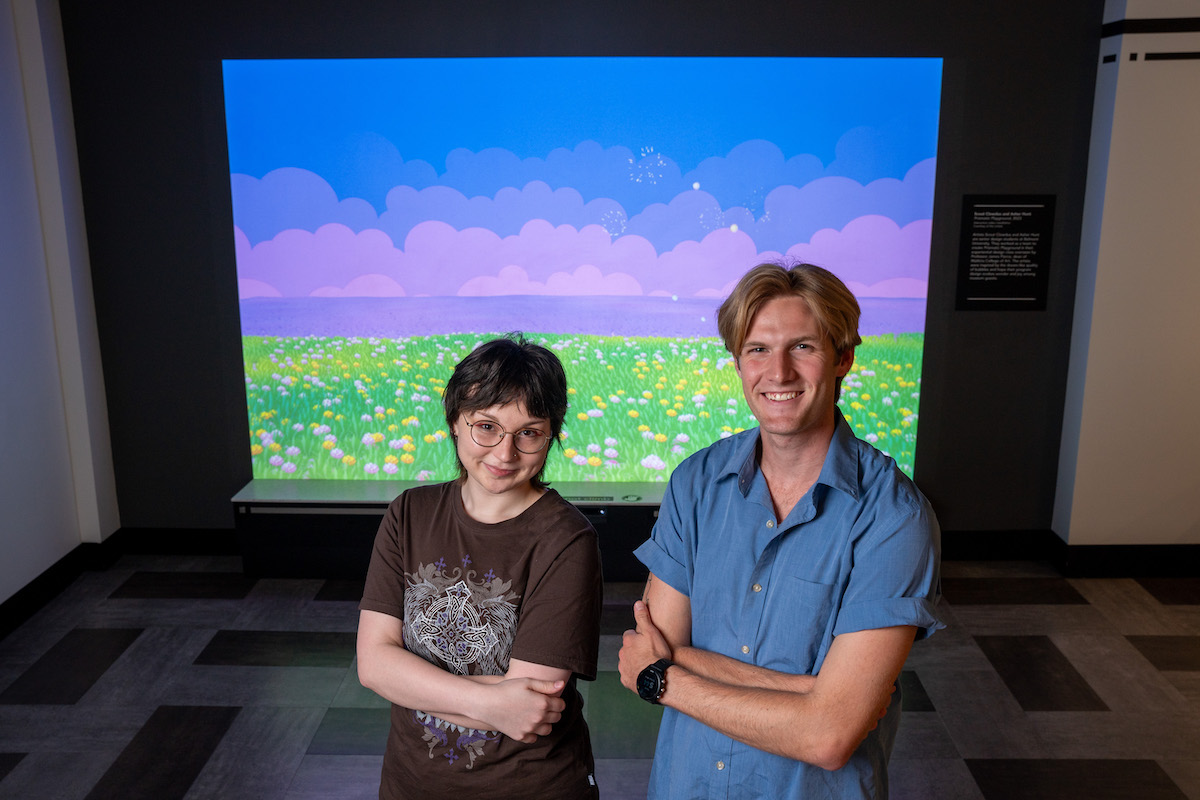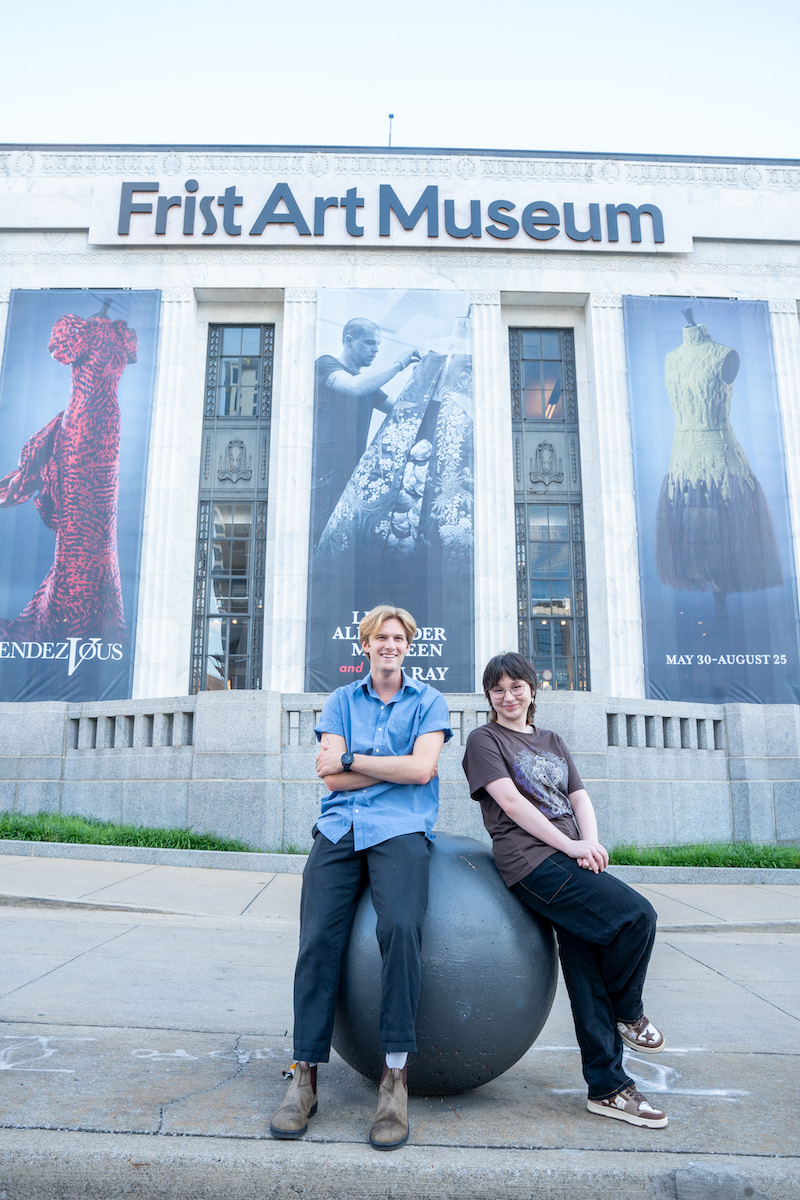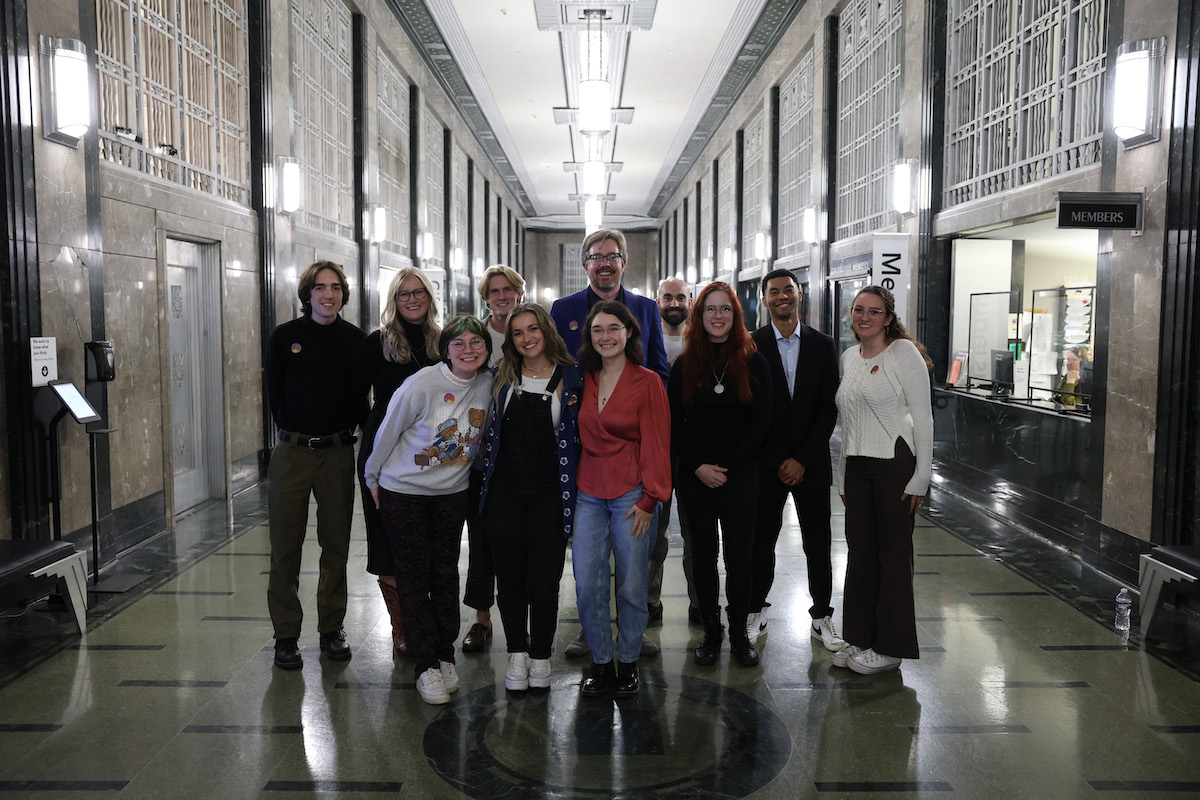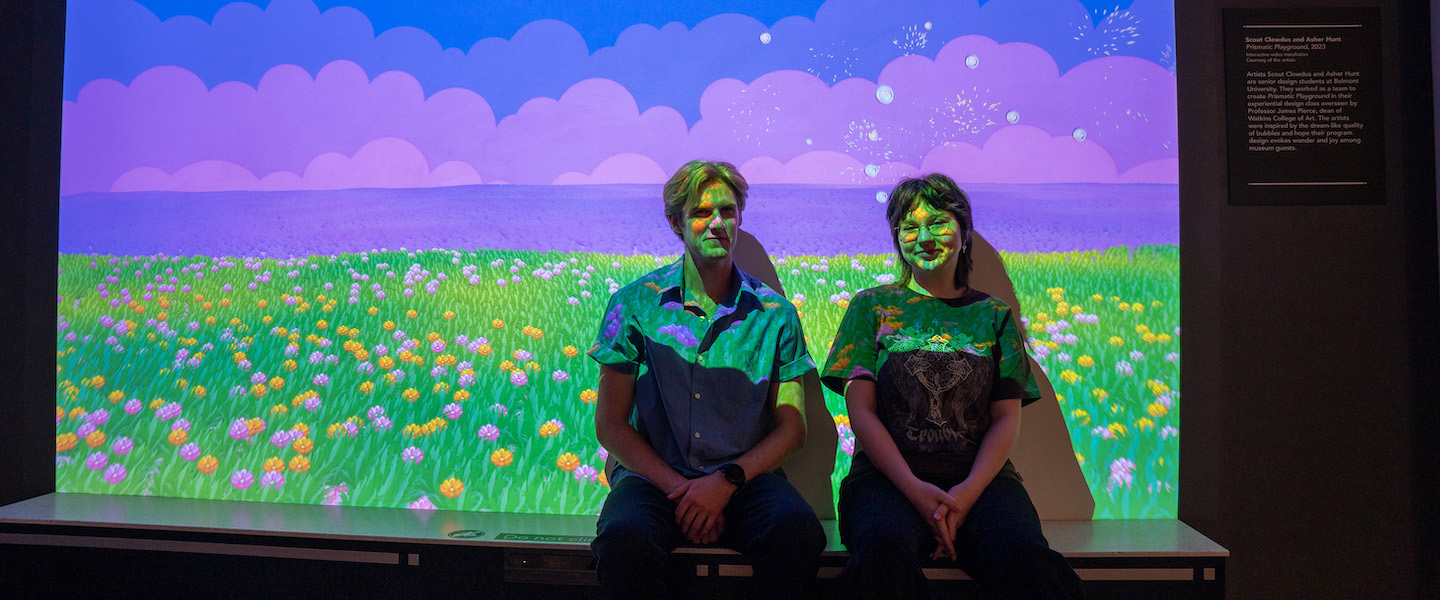Two projects from fall experiential design class selected for run in Frist’s ArtQuest space
The Martin ArtQuest Gallery at the Frist Art Museum isn't just for viewing art - it's for playing, experiencing and learning more about art making. Thanks to a competition among Watkins College of Art’s experiential graphic design studio class last fall, museum visitors will have two more interactive installations to immerse themselves in at the transformative media space.
Prismatic Playground
 Currently on display is Prismatic Playground by recent experiential design graduates Scout Clowdus and Asher Hunt. The vibrant exhibition encourages guests to become "human bubble wands," using their movements to fill the space with brilliant, kaleidoscopic bubbles.
Currently on display is Prismatic Playground by recent experiential design graduates Scout Clowdus and Asher Hunt. The vibrant exhibition encourages guests to become "human bubble wands," using their movements to fill the space with brilliant, kaleidoscopic bubbles.
The assignment originated in the experiential design studio course, which challenged students to create an accessible, age-inclusive installation for the museum’s transformative media space. Teams competed for their projects to be selected and implemented at the museum, and final projects were reviewed and selected by a team at the Frist Art Museum.
“This was a great experience for the students because not only did the students create work worthy of being on display at a world-class museum, but it also pushed them to explore new technologies and create interactive designs in a physical space,” said Watkins Dean James Pierce.
Clowdus and Hunt wanted to craft an inviting playground that sparked joy and playfulness in all ages. "We really wanted to lean into those prismatic colors of bubbles and create a space where people could engage in the act of play in a very loose and free way," said Clowdus.
 The pair divided the project's workload based on their strengths, with Hunt focusing on coding and development in the Unity game engine, while Clowdus took the lead in illustrating the vivid bubble assets.
The pair divided the project's workload based on their strengths, with Hunt focusing on coding and development in the Unity game engine, while Clowdus took the lead in illustrating the vivid bubble assets.
Clowdus credits the class for helping them gain crucial professional skills like using new software, creative problem-solving and user-focused design thinking. But just as pivotal was the confidence boost from seeing their hard work realized in a major institution.
"People from the industry were so impressed and wanted to know all about it during portfolio reviews, since they could tell it was a real-world project," Clowdus said. "That was a great segue into conversation about my work. So this has definitely boosted my confidence; it’s something I can be proud of and carry forward."
For Clowdus, walking into the Frist Art Museum and interacting with their functioning creation was the ultimate payoff.
"That was very cool to see it actually be there," they said. "Hopefully it gives people an opportunity to experience joy and play and fascination of this very small, minor act that’s fleeting and not stressful. Sometimes creating art can be stressful, but this is just bubbles. It’s the movement of your body, it’s for kids, it’s allowing everyone to experience the joy of creation."
Color Theory
 Following Prismatic Playground's run, the Frist Art Museum will install Color Theory by Frank Kirk, an illustration major who just completed her junior year.
Following Prismatic Playground's run, the Frist Art Museum will install Color Theory by Frank Kirk, an illustration major who just completed her junior year.
Kirk's piece allows visitors to use bodily silhouettes and movement to blend the fundamentals of color theory in an engaging way. As people enter the installation's frame, their silhouette appears in one primary color. As each new participant adds another primary color, overlapping spaces create dynamic secondary hues.
"I was thinking of something simple but educational since it's in an art museum environment – something that teaches a really basic, fundamental concept of art," Kirk explained. "I knew color theory could be something younger children could grasp, but it’s also just fun to play with."
Kirk credited the class and Professor James Pierce, dean of Watkins, for providing crucial tutorials on the Unity game engine, which allowed students to build personalized interactive experiences. Pierce was also available for individualized feedback and troubleshooting, though the students each worked independently and freely on their diverse projects.
For a non-coder like Kirk, the project was an invaluable chance to dip her toes into new digital skills, especially with her interest in game design.
 "Even this huge, daunting thing that major game developers use - Unity - there are so many resources you can use to learn," she said. "If you just start and go for it, you can learn a whole lot. The assignment inspired me to do all these side projects out of my own interest the whole time."
"Even this huge, daunting thing that major game developers use - Unity - there are so many resources you can use to learn," she said. "If you just start and go for it, you can learn a whole lot. The assignment inspired me to do all these side projects out of my own interest the whole time."
Both Clowdus and Kirk hope museum visitors, especially children, take away a sense of joy, collaboration and creative empowerment from engaging with their immersive artworks.
"I hope it's a fun bonding moment," said Kirk, "Especially in a space like an art museum where you're typically expected to sit and be quiet, this is a cool way to kind of be silly while also engaging with something educational."
The experiential design course's partnership with the Frist Art Museum gave these Belmont students the extraordinary opportunity to move art off the walls and into a fully sensory, interactive experience for the community to enjoy.
Learn More
Experiential Design at Watkins

